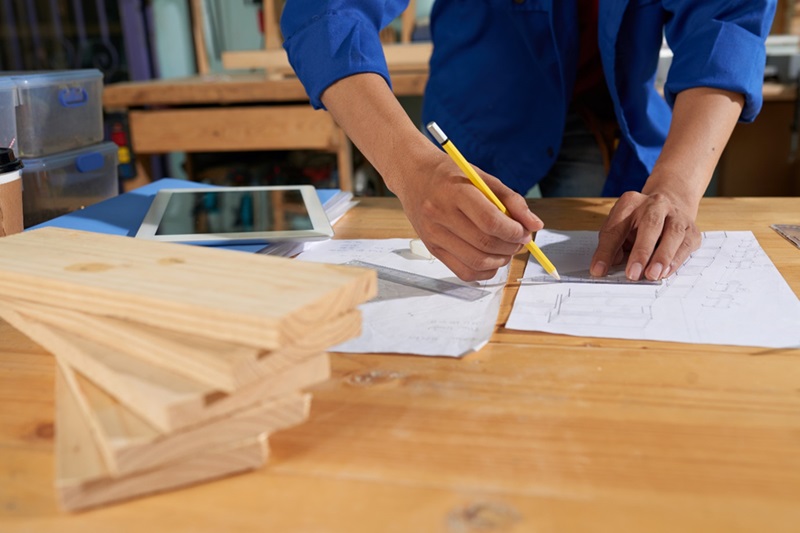How to Evaluate the Quality of Structural Timber for Sale
Understanding and assessing the quality of structural timber is crucial to the longevity, durability, and safety of any timber-based construction. This guide aims to provide detailed information on how to achieve this. More than just knowing which tree the timber came from, understanding timber involves an understanding of its inherent properties, how it is processed, graded, and finally used in construction. Analysing and assessing timber quality helps in determining its suitability for different structural applications, in turn influencing the safety, longevity, and aesthetic appeal of your construction project.
Being a renewable resource, timber has an important role to play in reducing the environmental impact of construction. By understanding and choosing quality timber, you not only ensure a long-lasting and durable structure but also contribute towards a sustainable future.
Understanding Structural Timber: The Essentials
Timber has been an integral part of construction since earliest of times. It’s worth noting that different types of woods were used in different parts of the world, depending on their availability. The early Australian settlers, for example, built their homes from locally available timber species such as Australian Pine and Jarrah.
Various types of structural timber namely softwood, hardwood and engineered timber, each with its unique set of properties are used in constructions. Softwoods, from coniferous trees, are generally lighter and less expensive but equally strong. Hardwoods, from deciduous trees, offer a higher density and are typically more durable and resistant to wear and tear. Engineered timber, man-made wood made from waste wood materials, are popular due to their cost-effectiveness and versatility.
Quality structural timber, regardless of type, should be of good strength, durability and free from defects for it to perform optimally when under different loads. The quality ultimately determines the timber’s lifespan and the stability of the structure it will form.
How to Know the Quality of Structural Timber
Certain physical attributes can give you clues about the quality of the timber. The genera, colour, grain structure, and texture of the timber are pertinent identifiers to begin with. High quality structural timber often possesses closely spaced growth rings and a uniform colour with no signs of discoloration.
Durability and strength are also critical measures of timber quality. Hardwoods generally have greater strength and durability than softwoods. Timber’s ability to resist decay and pest attack predominantly determines its durability. The moisture content of timber also influences its quality. Properly seasoned timber has low moisture content, reducing the risk of warping or shrinking and improving dimensional stability.
In terms of defects, any visible flaws such as knots, splits, cracks, or decay can negatively impact the quality of your timber. Therefore, it’s essential to always check for these before buying.
Timber Grading and What it Stands For
Understanding timber grading can considerably help in assessing its quality. The grading system is designed to categorize timber based on its physical characteristics and quality. This is done either through visual grading, where timber is examined manually, or machine grading which accurately measures timber’s mechanical properties.
Timber grades can include prime grade, high grade, standard grade, etc., each representing a different quality level. Understanding these grades enables you to choose the right quality of timber for your project needs, ensuring longevity and robustness.
Tips on purchasing Quality Structural Timber
One of the best ways to ensure you buy quality timber is by purchasing from reputable dealers who can provide proof of certification from relevant timber and forestry regulatory bodies. These certificates act as assurance that the timber has been legally sourced and meets specific quality standards.
Before purchasing, ensure you ask detailed questions related to the timber’s origin, species, grade, kiln-drying process, and compliance with regulatory standards. Conducting a self-assessment of the timber – checking for consistent colour, noticeable defects, signs of decay or pest infestation can further assure quality.
Benefits of Investing in Quality Structural Timber
Opting for quality timber may seem an expensive choice initially, but the benefits it brings in the long-run outweighs the initial cost. High-quality timber tends to last longer and is more resistant to environmental factors, reducing maintenance costs. Also, the thermal properties of timber provide better insulation, reducing energy costs.
Quality timber also promotes green building practices. By choosing certified timber, you contribute toward sustainable forestry practices, reduce carbon footprint, and help in promoting biodiversity.
Common Misconceptions about Structural Timber
An enduring myth about structural timber is that it is not fire-resistant. While timber does burn, quality structural timber is treated to delay ignition and resist the spread of flames, making it as safe as other construction materials. Others believe that timber isn’t durable. But with appropriate treatment and regular maintenance, timber can last for generations.

Frequently Asked Questions
Is structural timber sustainable?
Yes, timber is a renewable resource. Sourcing from certified sustainable managed forests promotes biodiversity and carbon sequestration, making it an eco-friendly choice.
Does timber quality affect building safety?
Absolutely. Quality timber is stronger, more durable & resistant to environmental damages, thereby ensuring the structural safety of the building.
How can I ensure I am purchasing quality timber?
Buy from certified suppliers, understand timber grades, and conduct a pre-purchase self-assessment.
What maintenance is required for a structural timber building?
Regular inspections for pests and decay, appropriate treatment, and occasional sealing or painting can help prolong the life of a structural timber building.
Conclusion
Understanding and assessing timber quality is crucial to building safe, durable, and environmentally friendly structures. With this knowledge, you’ll be empowered to make informed buying decisions that cater to your exact construction needs and contribute towards sustainable future.



